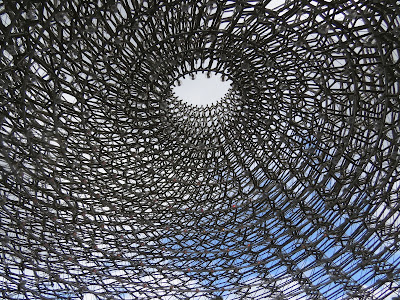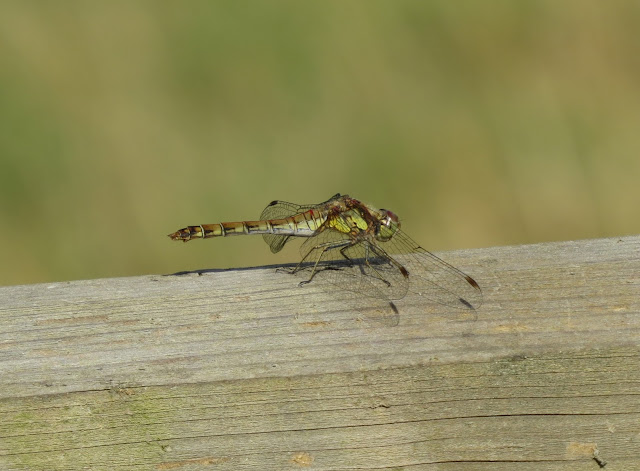 |
| The Hive at Kew Gardens |
I'm completely fascinated by the different sounds and movements honey bees make in the hive. They're constantly communicating with each other, whether it's by the 'waggle dance' (where a returning forager shows the others by a dance where a good source of food is) or whether it's a new queen bee 'piping' (as she emerges from her cell for the first time) or whether it's from the thousands of daily exchanges the bees make with each other that beekeepers see and hear but don't fully understand yet.
So when I heard about the Hive at Kew Gardens (designed by artist Wolfgang Buttress), I was very keen to see it as soon as possible. The Hive was opened earlier this summer and I eventually managed fit in a trip last week. Luckily (for me) there was a bit of break in the heatwave on that day and the weather was cooler and fresher - much more pleasant for wandering around the gardens.
The Hive has been constructed to highlight the importance of honey bees and pollinators to our food security and its design has been inspired by a traditional skep surrounded by a swarm of bees. But perhaps the most interesting aspect of the Hive is that it's linked to nearby honey bee colonies - and the intensity of sound and light in the structure is controlled by their vibrations.
This element of the design is based on the pioneering research by Dr Martin Bencsik of Nottingham Trent University into bee vibrations and communications. Dr Bencsik's work investigates the use of accelerometers in bee hives. These tiny devices can detect vibrations within hives as bees communicate and they help to predict behaviour, for example, sensing when bees are about to swarm.

Visitors to the Hive are able to feel four types of bee-vibrations in their heads by biting on a small wooden stick connected to a conductor. These vibrations include the queen's piping, begging - when one bee requests food from another, and the waggle dance. The overall sound in the Hive is the hum of a bee hive colony mixed with specially recorded music. This music is based on bees humming in the key of C. I found this gentle sound quite soothing. The only problem was the constant roar of planes flying overhead to Heathrow. I once lived for a while close to Kew Gardens and I'd forgotten how low, loud and distracting the planes are.
The ever-changing light in the Hive is from hundreds of LED bulbs placed within the 170,000 pieces of aluminium that make up the structure.
The Hive is surrounded by an area of wildflowers for pollinators, but I was obviously too late in the year to see the best of this, because most of the flowers had finished. The bees were finding plenty of other flowers in the gardens, though, such as these alstroemeria;
After leaving the hive I went to look for 'real' bee hives and found them by the kitchen garden. These will be very lucky honey bees; they have so much forage in the gardens here all year round.
 |
| Honey bee and bumblebee hives at Kew. These colonies aren't linked to the Hive. |
I do believe, then, that the Hive is worth a visit. I know I found it interesting to experience the behaviour of bees through a piece of art. The Hive also reminded me, once again, of the natural beauty of bees and how there's so much more to discover about them.
Here is a link to information on the Hive
here It'll be open until the end of 2017.




